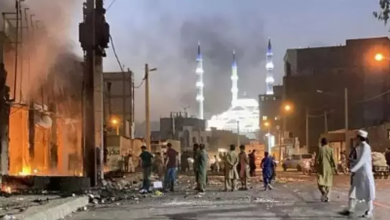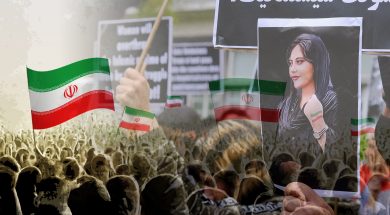In authoritarian systems like the Islamic Republic of Iran, power depends on control—of information, behavior, ideology, and above all, people. Few groups challenge that control more consistently and more powerfully than women. Feminism, as both a political philosophy and a grassroots movement, is inherently subversive to authoritarian regimes. In Iran, the Islamic Revolutionary Guard Corps (IRGC)—the regime’s most powerful arm of enforcement, surveillance, and ideological policing—recognizes this deeply.
The IRGC fears feminism because it threatens the foundations of their authority: patriarchy, religious absolutism, and centralized power. This analysis explores the relationship between the IRGC and feminist resistance in Iran, explaining why women—particularly those demanding equality and bodily autonomy—are seen as such dangerous opponents by the regime’s most powerful institution.
1. Feminism in Iran: A History of Resistance
Feminism in Iran is not a Western import; it is a homegrown movement rooted in generations of Iranian women’s struggle for equality, agency, and basic rights.
From early 20th-century education reformers to modern political activists, Iranian women have consistently challenged patriarchal norms—even under the Pahlavi monarchy. However, after the 1979 Islamic Revolution, the Islamic Republic institutionalized gender apartheid, enshrining inequality in law.
Despite this, women adapted. They found new ways to resist: by working within the system, through literature and journalism, through protest, and increasingly, through digital activism.
Feminism in Iran has evolved into a direct political threat—not because it promotes chaos, but because it demands justice and equity.
2. The IRGC’s Role in Enforcing Gender Control
The IRGC was created to protect the values of the Islamic Revolution. Among those values was a rigid vision of gender roles that placed women under legal, social, and physical control.
The IRGC enforces:
• Compulsory hijab laws, often through the Basij militia and morality police.
• Restrictions on women’s travel, work, and legal autonomy.
• Surveillance of women activists, especially those advocating for bodily autonomy or equal rights.
• Violent crackdowns on women-led protests, such as those following the death of Mahsa Amini in 2022.
To the IRGC, a woman without a veil is not just non-compliant; she is defiant. Feminism isn’t just subversive—it’s revolutionary.
3. The Threat of Feminist Ideology to Authoritarian Power
Feminism poses a unique threat to authoritarian regimes like Iran’s for several reasons:
A. It Rejects Obedience
Authoritarianism demands conformity. Feminism teaches women to question rules that do not serve them. It promotes:
• Bodily autonomy
• Freedom of expression
• Equal participation in public life
Each of these principles undermines the IRGC’s mission of ideological control.
B. It Is Inherently Grassroots
Feminist movements are rarely top-down. They grow in homes, schools, online spaces, and whispered conversations. This decentralized structure makes them harder to surveil and suppress.
C. It Inspires Broader Movements
Iranian feminism does not exist in a vacuum. It frequently merges with environmental, labor, student, and minority rights movements. These coalitions increase the scale of opposition—and the threat to the state.
4. The Case of Mahsa Amini and “Women, Life, Freedom”
The death of Mahsa (Jina) Amini in September 2022, after being detained by the morality police, became a turning point. Women led the response, organizing widespread protests under the slogan:
“Women, Life, Freedom” — a Kurdish feminist chant that quickly became a national rallying cry.
The IRGC responded with:
• Mass arrests
• Beatings and torture
• Live ammunition against protesters
• Internet blackouts to limit coordination and coverage
Despite these efforts, the movement endured—and even strengthened.
The IRGC’s violent response was proof of their fear: a woman-led revolution threatens their very foundation.
5. Women Activists as Targets of State Violence
The IRGC uses various tactics to silence feminist voices:
• Arbitrary detention of women journalists, students, lawyers, and influencers.
• Sexual violence as a tool of intimidation in detention centers.
• Smear campaigns and public shaming, especially against those who appear unveiled.
• Criminal charges such as “propaganda against the state” or “corruption on Earth” against peaceful activists.
Yet despite these risks, Iranian women continue to resist. From Nasrin Sotoudeh to Narges Mohammadi, from anonymous teenagers to Nobel laureates, their courage continues to inspire a nation.
6. The Digital Battlefield
Iranian women have turned to social media and encrypted apps to bypass state censorship. The IRGC, in turn, has expanded its cyberwarfare operations:
• Monitoring Instagram, Telegram, WhatsApp, and Twitter
• Conducting phishing attacks to hack activists’ accounts
• Releasing forced confessions through state media
• Spreading disinformation about feminist movements
Yet hashtags like #MahsaAmini, #WomenLifeFreedom, and #No2Hijab went viral internationally, showing that digital feminism is powerful—and harder to control than traditional organizing.
7. Why the IRGC’s Fear Is Rational
While authoritarian regimes often overestimate the threat of dissent, in this case, the IRGC is right to be afraid. Feminism threatens to unravel the ideological and legal scaffolding that upholds the Islamic Republic.
If women gain:
• Full bodily autonomy
• Equal legal status
• Free political participation
then the regime’s legitimacy, built on patriarchal religious interpretations, collapses.
Moreover, feminism inspires solidarity across gender, ethnic, and generational lines. That unity is a nightmare for authoritarian rulers.
8. International Implications
The struggle between feminism and authoritarianism in Iran has global relevance:
• It reveals how gender oppression is central to authoritarian rule—not a byproduct, but a strategy.
• It underscores the importance of amplifying women’s voices in foreign policy and human rights discourse.
• It shows the potential of feminist movements to drive systemic political change.
When Iranian women rise, the world watches. And increasingly, it joins them.
9. Recommendations: How to Support Iranian Feminist Resistance
For Governments:
• Designate the IRGC as a terrorist organization for its role in systemic gender-based violence.
• Impose targeted sanctions on IRGC leaders responsible for abuse.
• Prioritize women’s rights in diplomatic discussions with Iran.
For NGOs and Civil Society:
• Provide legal aid, secure communication tools, and mental health support to activists.
• Fund safe houses and relocation efforts for those in danger.
• Translate and amplify women’s stories and demands globally.
For Individuals:
• Follow and share content from Iranian women activists.
• Support petitions, protests, and campaigns amplifying “Women, Life, Freedom.”
• Educate your communities about the intersection of feminism and authoritarianism in Iran.
Conclusion: Feminism is the IRGC’s Weakest Point
The IRGC’s fear of feminism is not irrational—it’s strategic. They understand that liberating women from control also frees society from dictatorship. That is why they invest so heavily in enforcing modesty laws, silencing dissent, and punishing defiance.
But despite arrests, threats, and executions, the feminist flame in Iran continues to burn.
Join Our Newsletter!
Stay informed with the latest updates, news, and ways to take action in the fight for justice and global security. Sign up now to get updates delivered straight to your inbox!





